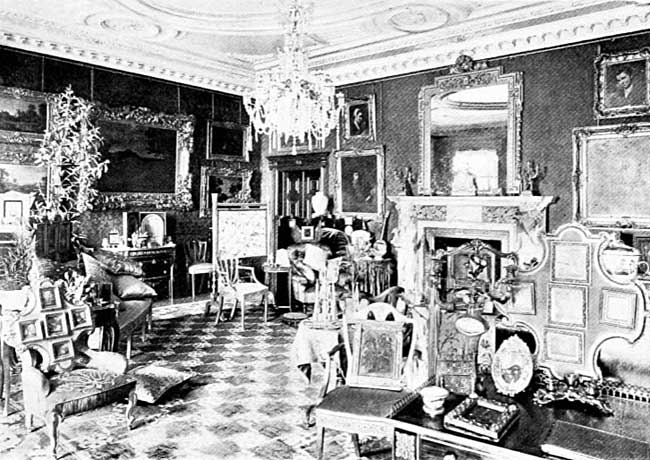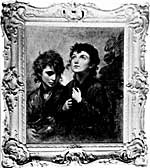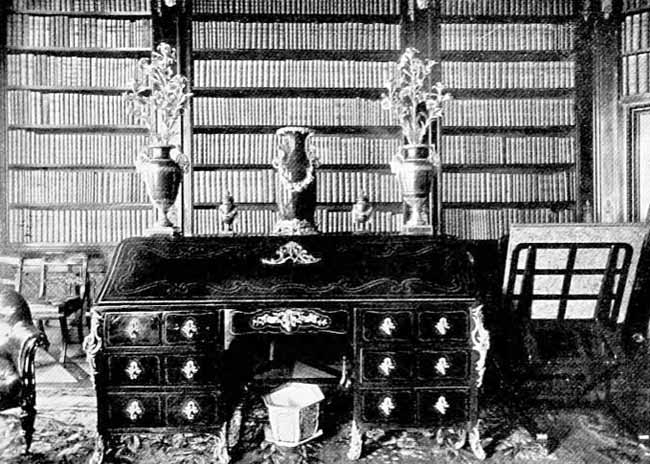Beyond, we come to the Yellow Drawing-room. In it is what is considered to be one of the finest marble chimneypieces in the country; it was bought at Beckford's sale at Fonthill: the chiselling is really exquisite, and the figures are relieved by a tinted background. The pictures in this room are noteworthy.

THE YELLOW DRAWING-ROOM.

"BEGGAR BOYS" BY GAINSBOROUGH.
Among them are Gainsborough's "Beggar Boys"; the "Portrait of an Orator" by Rembrandt; "Sigismunda Mourning over the Heart of her Murdered Lover," by Correggio. The story goes that Hogarth, seeing this picture, backed himself to paint a better of the same subject; I understand that his critics considered that he failed to do so. The other pictures include a Guido, Poussin, Vander Meulen, Rubens, and several Canalettos. Out of this is the small Dining-room. Here also the pictures are very good, particularly the large Van Dyck — painted presumably for an Altar piece — of "The Descent from the Cross"; three Claude Lorraines; "The Battle of the Boyne," by Vander Meulen"; a Rubens, two Poussins, Feaiers, and Canalettos.
 THE LIBRARY.
THE LIBRARY.Farther on we come to the Library, undoubtedly the finest room in the house, decorated entirely in old Spanish mahogany in the Empire style. The furniture includes two splendid escritoires, which tradition says were formerly the property of Louis XIV. ; but surely, before talking of furniture, in a library we should turn to the books. The bibliophile would delight in several Caxtons, a first folio of Shakespeare, a first edition of Dante, and a Book of Hours richly illuminated — in fact there is not supposed to be a better example in the Bodleian. This ends the rooms on the south side. On the east are two small libraries. the Duke's photographic rooms (where you will find every latest appliance in the camera world), and the Study, entirely fitted up in old oak. The pictures include one by Heere of Queen Mary,— curiously enough much injured by fire (for if history speaks true, she herself was much given to using this form of punishment on those who dared to differ with her in their religious belief, —two Sir Joshuas, two Hogarths — portraits of himself and wife —two Rigauds of Louis XV. and his Queen, and a Quentin Matsys, which represents the artist painting the portrait of a lady.
